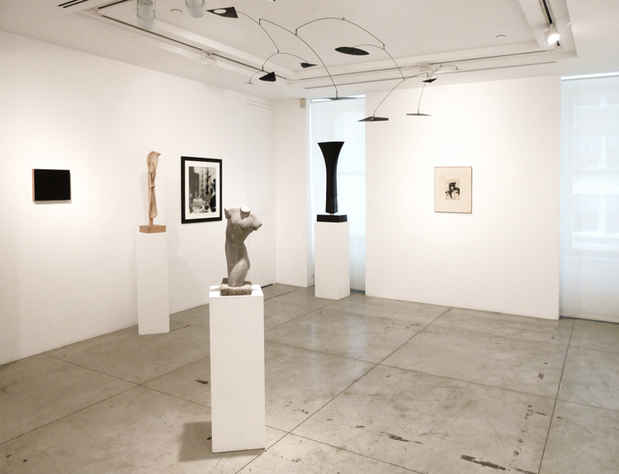"Black & White" Exhibition
Jason McCoy, Inc. (Midtown)

This event has ended.
Often abbreviated as B/W or B&W, black-and-white as a visual description is somewhat of a misnomer as it can entail various shades of white, black and gray. In photography, the early works for example often contained a tint of sepia and in painting, various artists have repeatedly argued that black and white should be viewed as hues in their own right (rather than just as light and the absence of light). No matter how fine the nuances within the B&W delineation might be from case to case, the works in this exhibition prove that a restricted palette does not make for a lack of expressive or emotional range. The concentration on a black-and-white palette can be formal, as is the case in a Calder black mobile or Sugimoto’s photograph "Colors of Shadow C1020," or gestural, demonstrated by works on paper by Jackson Pollock, Franz Kline, David Smith, and Mark Tobey for example. It can be employed as a meditation on light, such as in Robert Ryman’s "Summary" or Richard Pousette-Dart’s "Hieroglyph White Gardenor" its absence, as shown in Maxwell Hendler’s black monochrome "Orfeo." B&W can allude to the clarity of communication, such as black text on white ground, the notion of timeless elegance, nostalgia, serenity, sobriety, the extremity of emotion, the color of skin, good and evil, night and day, past and future, life and death. As a term it implies a broad concept, as the inspiration for a thematic group show, it functions as an umbrella for diversity.
Media
Schedule
from July 27, 2010 to October 01, 2010
Summer Hours: (closed Saturday and Sundays) 10am-5pm. After Sept. 6: 10am-6pm.
Artist(s)
AlexanderArchipenko, Constantin Brancusi, Alexander Calder, Christopher Deeton, Burgoyne Diller, Adolph Gottlieb, Maxwell Hendler, Rachel Hovnanian, Bo Joseph, Robert Kelly, Rosy Keyser, Frederick Kiesler, Franz Kline, Gregoire Muller, Masayuki Nagare, Isamu Noguchi, Charles Pollock, Jackson Pollock, Richard Pousette-Dart, Robert Ryman, David Smith, Leon Polk Smith, Annelies Strba, Hiroshi Sugimoto, Mark Tobey, Kara Walker, John Zurier